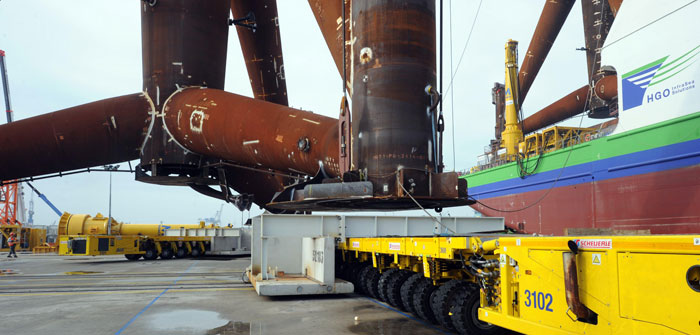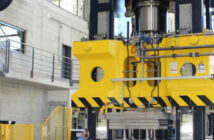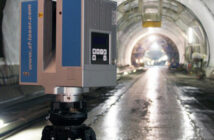BLG Logistics Group AG secures patent for Sleeper. The offshore wind industry will be using the Sleeper to cut costs. Wind energy logistics is a business segment of BLG Logistics. The German Patent Office has now made a decision to grant the patent. A big step for BLG Logistics Group AG located in Bremen, Germany.
Wind power logistics: BLG files a patent for Sleeper
BLG Logistics Group has developed the Sleeper for the offshore wind energy industry where huge components weighing up to 3,800 tonnes are stored on large areas. Effectively distributing the load on the ground is ideal when storing these extremely heavy wind energy components. This is now possible with the Sleeper bearing mount system developed by BLG Logistics Group. Advantage for operators: this eliminates the need for extremely extensive surface strengthening measures normally required for the bearing surface.
Sleeper patent: effective distribution of load on the ground
The Sleeper not only distributes the load effectively, it facilitates flexible handling of the components to compensate changes in the bearing surface plans. The Sleeper system also includes specially designed adapter plates. The modular design of the adapter plates enables the Sleeper to be universally implemented. The biggest of all components such as the giant tripods, piles and many more rest safely on the adapter plates. The adapter plates are used for both transport as well support.
Sleeper: patent granted and design certificate of Germanischer Lloyd awarded
While the German Patent Office certifies the uniqueness of the Sleeper system, Germanischer Lloyd certifies the close proximity to the market and system competence of the Sleeper. Germanischer Lloyd awarded the Sleeper a design certificate for wind energy nearshore transport.
The feeder is an integral part of an optimized process chain for field of wind energy such as illustrated by the example of the tripods transport. At the start of the transport process, a Sleeper adapter plate element is mounted under each foot of the tripod. In the second step, the foundation structures – the tripods – are then transported by three self-propelled modular transporters (SPMT) to a temporary storage area where other Sleeper elements are ready and waiting. These other Sleeper elements are now connected to form a complete system.
BLG is now applying for international patents for its Sleeper
Because BLG Logistics Group AG has already received a number of inquiries from abroad for the Sleeper, the company has decided to take the opportunity to apply for international patents for the Sleeper. The international patent application process has been initiated.
BLG Logistics Group: an innovation driver for logistics solutions
BLG Logistics Group has been developing solutions for optimising wind energy logistics for a long time.
„OFFSHORE BHV 1“ pontoon with a railway system and sea fastenings
The large components of wind energy logistics such as foundations and tripods are characterised by their tremendous weight sometimes weighing 900 tonnes. BLG Logistics Group developed the special OFFSHORE BHV 1 pontoon for transporting large-size components. The special pontoon rests on seventeen ballast tanks and can be tied up to a dock using a special coupling system. The gigantic cargo items are loaded by self-propelled modular transporters (SPMT). This makes loading considerably less expensive than previously possible using cranes.
A railway system has also been integrated into the special BHV 1 pontoon. Electro-hydraulic railway vehicles are thus able to load and offload the components. Yet another new item in wind energy logistics is the fastening system on the special pontoon. In the past, it was necessary to secure the cargo items by welding them to the deck. Heavy-duty deck lashing pots or sea fastenings flush-mounted in the deck are now used to securely lash loads without welding.
Mobile weighing system for large components determines the centres of gravity
One gets to know the difference between theory and practice in offshore wind energy logistics when it comes to the target and actual weights of large components. Shoring large-size components at the construction site is based on the target weight of the components. A considerable deviation between the actual and target weights can make installation impossible and may even result in an expensive return shipment.
BLG Logistics Group has developed a mobile weighing system to compare the target and actual weights of the cargo items while still in port. This weighing system makes it possible to weigh large components regardless of where they are located, i.e. while in temporary storage or later after they have been relocated onto a self-propelled modular transporter. The „icing on the cake“ is the capability of determining the centre of gravity of the components on a level. The mobile scales are able to weigh large-size components from the wind energy sector weighing up to a total of 4,800 tonnes. An innovative piece of mosaic in the field of wind energy logistics.
Photo credits: © BLG Logistics Group AG










